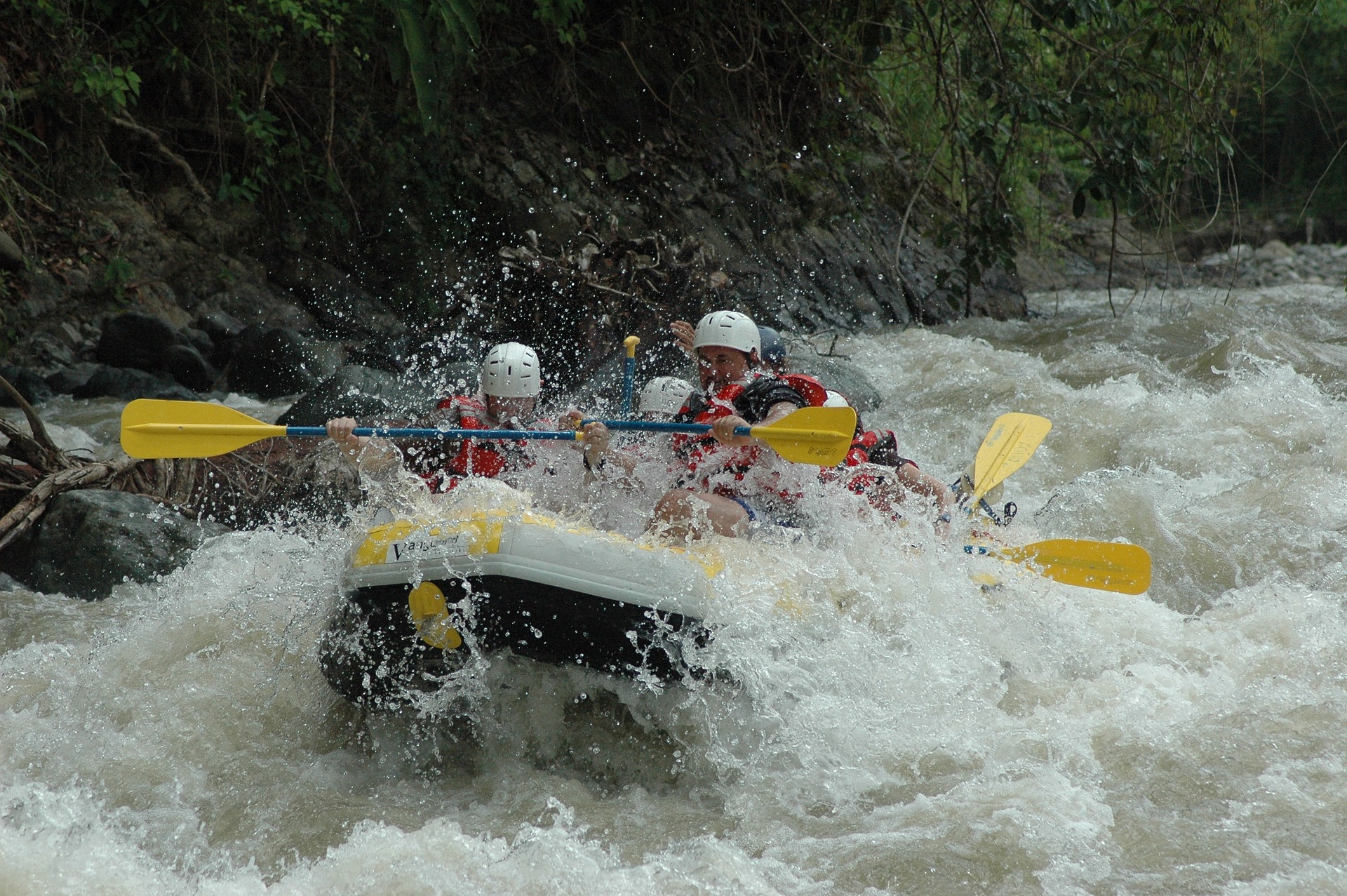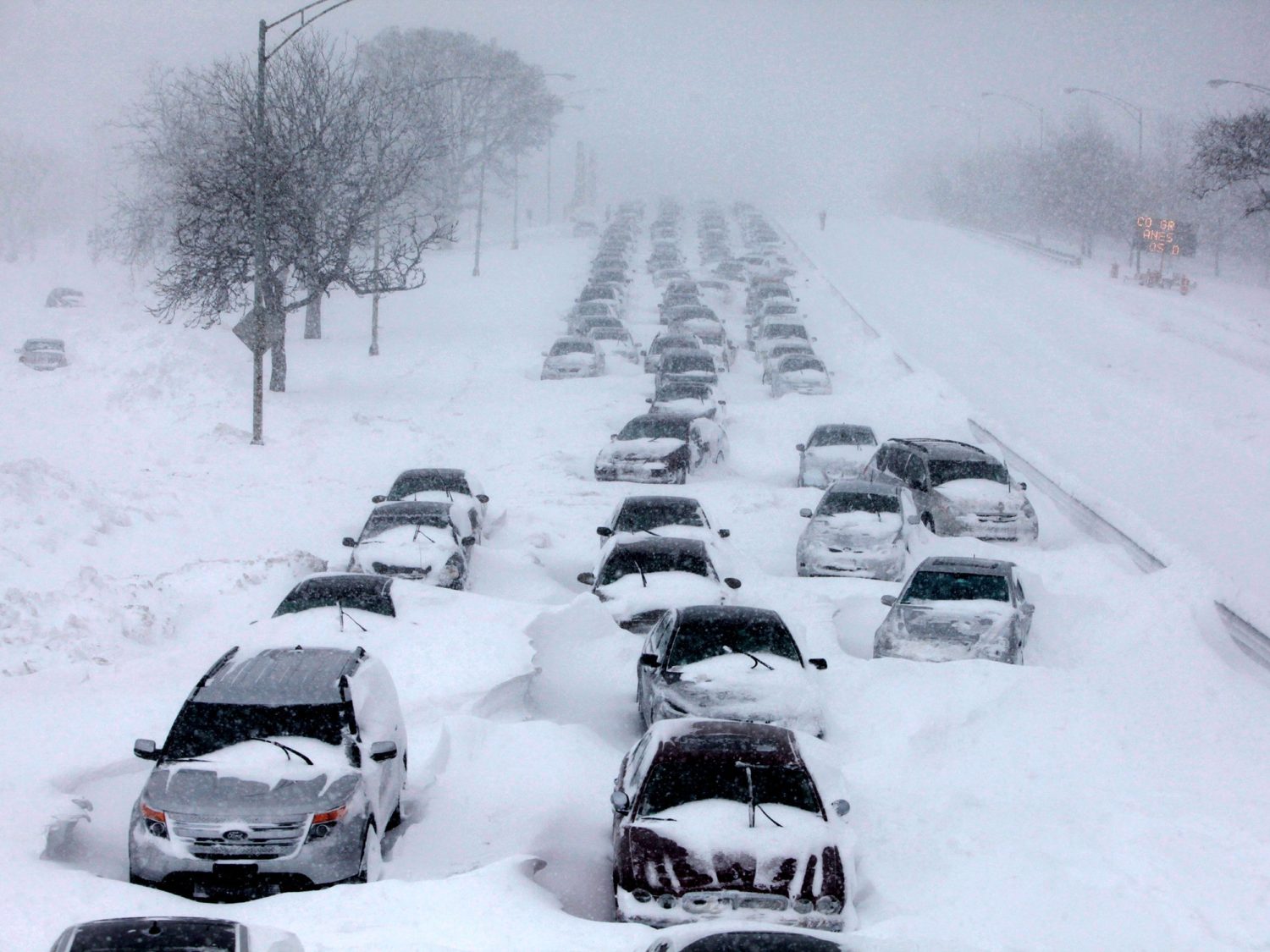There must have been something in the water in 1994. For whatever reason, Hollywood released two whitewater rafting-themed movies in the same year. First, there was “White Mile,” an HBO movie about a whitewater rafting competition gone horribly wrong, starring three of the most unlikely adventurists show business has ever assembled: Alan Alda, Peter Gallagher and Robert Loggia. You’d be forgiven for not remembering that one. But nary four months later, Universal Pictures made a huge splash with “The River Wild,” an outdoorsy thriller about a family whose mother, an expert river guide played by Meryl Streep, is forced at gun point by killers (Kevin Beacon and John C. Reilly) to help them escape capture by navigating the perilous rapids via raft, including the infamous “Gauntlet.” What a time to be a rafter!
While Hollywood hasn’t done a great job of portraying this adventure sport in the best light, throughout myriad whitewater rafting movies (there are several more) it has occasionally captured the beauty and splendor of the great outdoors, and the sheer power of a wild river.
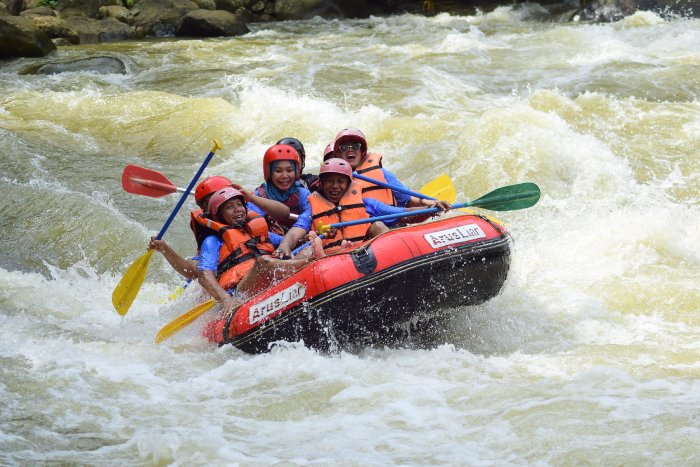
A Brief History of Whitewater Rafting
For centuries, water has served as a vital means of transportation, with native Americans using rafts and canoes to navigate the extensive waterways of North America. But the origins of modern whitewater rafting can be traced back to pre-American Civil War days when Lieutenant John Fremont and inventor Horace Day embarked on an exploration of Colorado’s Platte River aboard a primitive rubber raft they built to survey the Great Plains and Rocky Mountains regions.
In 1869, Major John Wesley Powell set out with nine others to explore the Green and Colorado Rivers. Although they used wooden boats that were in no way designed to navigate the rivers’ whitewater, the crew became among the first to hold on tight and ride the rapids.
Following World War II, surplus rafts became available, leading to regular trips down western rivers, including the first commercial rafting trip on the Salmon River in the northwestern U.S., and later the Snake River running through the newly constructed Grand Teton National Park.
But it wasn’t until the 1960s that commercial whitewater rafting truly transformed into a popular recreational activity, as outfitters replaced aging military rafts with more advanced inflatable versions.
The next decade saw the introduction of the whitewater rafting-adjacent sport of kayak slalom to the Munich Olympics, which drew significant attention. And in the ‘80s, the equipment, tools and infrastructure used in whitewater rafting continued to evolve, culminating in the sophisticated gear available today.
[Related Reading: Sail Away With Global Rescue on Board]
Whitewater Rafting 101
Modern whitewater rafting involves “putting-in” a large raft upstream of rapids on a fast-flowing river, sitting on the side of the raft with up to nine other people, pushing off and navigating the whitewater ahead. The goal is to try to hang on and remain in the raft, but depending on water conditions, you might get ejected out and pulled back aboard by your guide or fellow rafters. Sounds scary, but falling out can be part of the fun. So much so that it’s often encouraged by the guide once you’ve passed by the bigger sections of whitewater.
Whitewater
What is whitewater exactly? In a river, whitewater – collectively known as breaks, falls or rapids – is the white and opaque frothy water that’s the result of gradient changes to water’s smooth flow that causes turbulence. Rocks, cliffs, fallen trees, bridge abutments, piers or any other obstacles that stand in the way of the water’s free flow will create it. There is a grading system for whitewater called the International Scale of River Difficulty, in which whitewater is classified into six categories from class I (easiest and safest) to class VI (so difficult and dangerous most rafting companies don’t run them). Most rivers used for rafting in North America have a whitewater classification between II-IV.
Rafts
The rafts manufactured to withstand the rigors of whitewater are specialized inflatable boats made of a heavy-duty polyethylene upper and an armor-like polyurethane hull that won’t get damaged by rock hits or scrapes against the river or beach bottom. They’re festooned with handles and D-rings to attach rigging when you need to tie down gear or attach even more “hang on” handles. These self-bailing rafts are typically seven feet wide, 12-14 feet long and can hold up to 10 people.
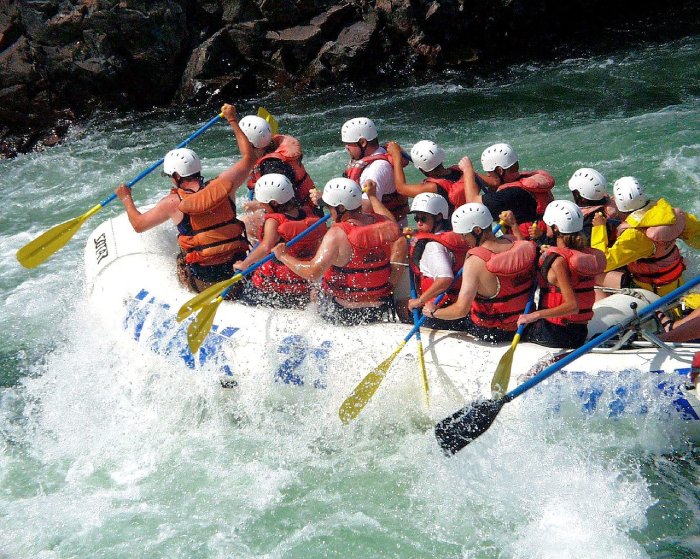
Other Gear
When you book a trip with a rafting company, you’ll be provided with a few essential items for your ride: a required PFD (life jacket); a rafting or kayak helmet; a wetsuit, depending on the time of year; and a special paddle made with a lightweight shaft, a stiff blade on one end, and a t-handle on the other.
Duration
Depending on the rafting company and the itinerary, trips can range from quick half-day hits to multi-day excursions, with camping, fishing and even yoga activities from which to choose. All equipment and food are either brought along in dry bags on the raft or dropped off by vehicle at designated points on the bank.
Objections
Sure, whitewater rafting is an adventure not for the faint of heart and, though unlikely, it can be dangerous – according to the National Institute of Health, the rafting injury rate is about .55 per 100,000 user days – but overall, it’s a relatively safe sport.
Instead, it’s the rafters themselves who can be their own worst enemy.
“The number one mistake people make when they whitewater raft is forgetting to practice self-care on the river,” said Lauren von Jess of America’s Rafting Company, a Global Rescue Safe Travel Partner. “My advice? Wear sunscreen, drink plenty of water, wear your new river shoes before rafting day to break them in, and bring the right clothing.”
[Related Reading: Summer Water Safety: How To Identify Swimmers in Trouble]
Need More Reasons To Raft?
There are few activities that require such little training and skill to produce such tremendous thrills. If you’re able-bodied, can swim relatively well, listen to directions, wear a PFD and hold a paddle, you can whitewater raft. But ease of entry and adrenaline rushes are only a part of the appeal.
Accessibility
You don’t have to travel to the far reaches of the planet to find the best rapids. There’s whitewater in nearly every region of North America. From California to Quebec, Oregon to North Carolina, if there’s a fast-moving river, chances are there’s a whitewater rafting company happy to give you a ride. But if you do want to travel abroad for an international whitewater experience, there are several famous rivers throughout the world that would give even the most seasoned river guides pause.
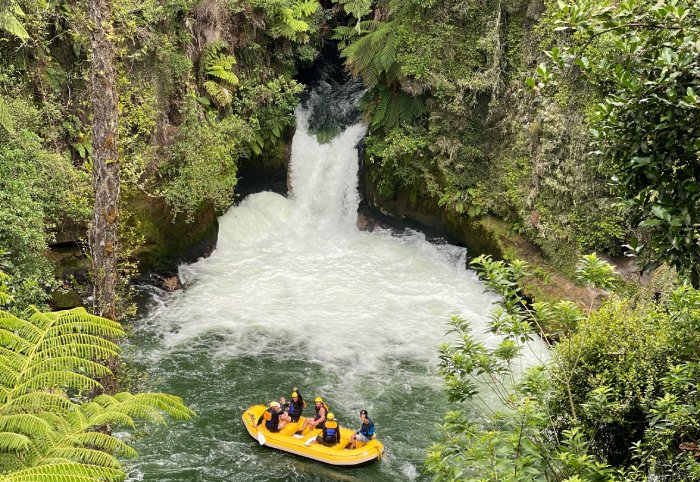
Scenery
While you’ll be fixated on the walls of whitewater around you as you work your way through the rapids, there will also be plenty of time to take in the sights, sounds and smells of the deep forests typically surrounding the whitewater rivers. It’s hard to beat seeing a bear on the riverbank from the safe distance of a raft floating downstream.
Conservation Awareness
There’s an instant connection you’ll feel to the natural world as you embark upon your rafting adventure. You’ll have a firsthand experience of a natural waterway, exposed to the beauty and fragility of rivers and their surrounding ecosystems. Witnessing the importance of clean water, outside living and thriving forests and wildlife can foster a deeper appreciation for the environment and what it takes to keep it healthy.
Team Building
There’s a reason so many school trips or corporate retreats feature whitewater rafting. It’s a perfect team-building activity. It’s an adventure that requires a high level of collaboration and communication, trust and mutual support, problem solving and decision making, and leadership and followership. And because of that, it creates strong bonds and camaraderie, as well as personal growth and self-confidence. Plus, it’s just plain fun.
No Restrictions on Activities
Whether you’re braving the rapids of northwestern Maine or navigating the whitewater in Nepal, a Global Rescue membership does not exclude or restrict adventure activities. It’s part of our “No Restrictions” approach to travel. So, grab your PFD and paddle, and hop into the raft for one heck of a wild ride. And who knows? Maybe the next big Hollywood love affair with whitewater rafting is right around the bend.

